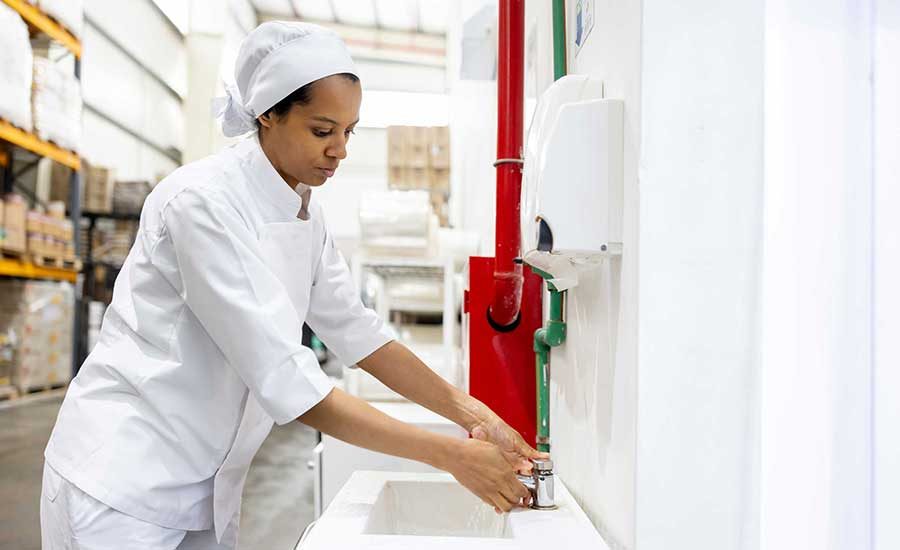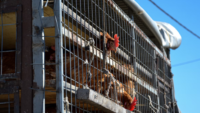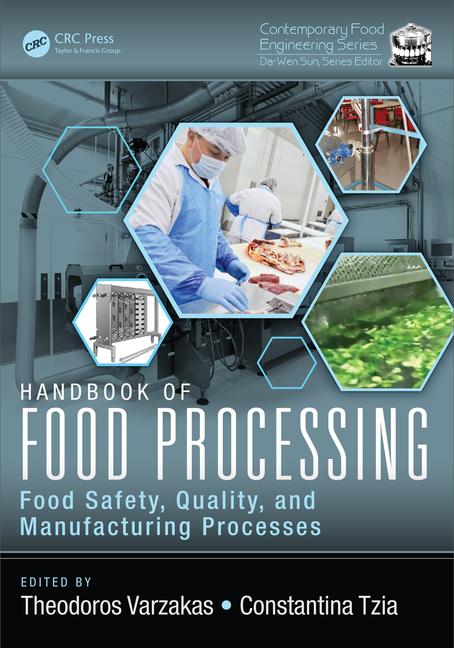Food on the Move: Managing Hygiene and Safety Risks in Transport
The transportation of bulk food within supply chains presents unique risks, particularly regarding the cleaning processes between loads in different countries and organizations

Video credit: ENFIT
The global food supply chain faces significant challenges, exacerbated by ongoing global crises, climate change, increased migration, and the rising demand for food. Estimates suggest that global food demand will grow by approximately 56 percent by 2050, making the provision of sufficient and safe food a critical priority.
According to 2021 data from the Food and Agriculture Organization of the United Nations (FAO), "Staggering volumes of food are transported annually, posing considerable challenges for the global logistics industry."1 Approximately 58 percent of global food trade occurs via sea routes and utilizes bulk carriers and container ships. Thirty-one percent is dedicated to road transportation, which often requires specialized silos or tankers. Rail transport accounts for 10 percent and relies on specialized railcars such as hoppers and tank cars.
The transportation of bulk food within supply chains presents unique risks, particularly regarding the cleaning processes between loads in different countries and organizations. In the EU alone, there are approximately 650 specialized cleaning stations. Each station can process up to 40 transport units per day, highlighting the potential risks associated with cleaning procedures. The complexity of these processes necessitates the development and implementation of standardized cleaning protocols, including the validation of the same.
Where are the Risks in Bulk Transport of Food?
At first glance, the transport of food from point A to point B—loader to unloader—appears straightforward. However, numerous critical activities within this seemingly simple process can introduce contamination risks. A major focus area is the cleaning process, whether performed in-house using a clean-in-place (CIP) system or outsourced to an external cleaning station.
Some may argue that maintaining hygiene in a transport unit, such as a tank or silo, is as simple as cleaning stationary equipment in a production facility. However, the reality is far more complex. Unlike static tanks, transport units move between multiple locations, load different products, and undergo varied cleaning procedures. These inconsistencies create heightened risks of cross-contact and contamination.
Transport Unit Design: A Hidden Hazard
The design of transport units plays a critical role in food safety. While the food industry adheres to stringent hygiene standards within production facilities, these standards are often not fully extended to the food transport chain.
Transport units are typically constructed from stainless steel with proper welding, gaskets, valves, and pumps. However, inspections conducted by ENFIT International Association—Supply Chain Safety (ENFIT) have revealed alarming flaws in more than 100 tested transport units. Issues include improper welding, damaged gaskets, surface deterioration due to incorrect washing procedures, poorly designed pumps, and even neglected air lines—factors that can compromise food safety (Figure 1).

Although new transport units are approved for food use based on internal protocols, many units in circulation are over 20 years old, with little to no reinspection for continued suitability. Some have even been repurposed from transporting chemicals to food products, further increasing risks. These design and maintenance gaps can lead to physical and chemical hazards, inadequate cleaning, product residues, and ultimately, cross-contamination.
Loading and Unloading Controls: A Weak Link in Food Safety
Although the transportation of food might appear straightforward—loading at point A, transporting, and unloading at point B—this represents less than 60 percent of actual transport routes. Consider the following scenario: a transport unit loads milk powder in Poland, delivers it to Hungary, and then undergoes cleaning at a cleaning station before being loaded with flour for transport to Croatia. After unloading, it is cleaned once more, potentially loaded with sugar, and then transported back to Poland.
This example illustrates the complexity of food supply chains and highlights the numerous opportunities for contamination. Transporting different products necessitates thorough cleaning to ensure no residue remains in the transport unit, as residual traces could contaminate subsequent loads. This issue is particularly critical when dealing with allergens, as demonstrated in the scenario above.
The industry generally assumes that all products transported are safe. However, this assumption can be flawed. Take, for example, the transport of liquid chocolate at around 40 °C (104 °F). If this chocolate is contaminated with Salmonella, then the next recipient in the supply chain could receive a contaminated product. Often, the product is transferred into a reception tank at a similar temperature and later used to coat confectionery items. Without a processing step to eliminate Salmonella, the contaminated confectionery is ultimately delivered to consumers, echoing the major Salmonella chocolate recall in Europe in 2022.
Additionally, if the transport unit used for chocolate is not properly cleaned, it could contaminate the next load. There have even been instances where a transport unit previously carried animal feed and subsequently transported a human food product.
To mitigate these risks, the food industry has implemented measures such as clearly defining acceptable previous loads, often extending to the last three loads. However, this practice ultimately depends on trust in the transport service provider.
Loading and unloading controls at food production sites represent another critical step in the transport process. Despite being mandated by food safety standards, the ENFIT Transport Hygiene Risk Analysis Model has identified inconsistencies. Often, control procedures established five years ago remain unexamined and unmodified, leading to a misleading absence of reported non-conformities. For instance, during ENFIT's inspections, it was found that in ten out of ten cases, prior loading controls were insufficiently thorough to detect non-conformities. In one dairy example, microbiological swabs were consistently taken from the same section of the transport unit—the main line used for loading milk—which is continuously cleaned. This practice results in consistently "clean" test results, as confirmed by annual trend analyses. However, an inspection of a line adjacent to the main line revealed visible residues of uncleaned product.
Similarly, shortcomings are evident in controls prior to unloading. Companies often sample the product for internal laboratory testing, focusing on specific quality and safety parameters. However, these tests rarely include checks for allergens linked to previously transported products, due to reliance on cleaning documentation that merely confirms that cleaning occurred, without verifying its adequacy.
Cleaning of Transport Units
Over time, a level of trust has been established within the supply chain regarding the cleaning of transport units. As a result, food safety management systems (FSMSs) have not classified cleaning stations as food business operators (FBOs). According to FSMS guidelines, entities considered FBOs are those directly involved in food production, transportation, or storage. Services that support food safety but do not handle food directly are not recognized as FBOs, meaning they are subject to less stringent regulatory oversight compared to traditional FSMS requirements.
This regulatory gap has led to inconsistencies in cleaning practices. Since cleaning stations are not bound by uniform standards, food producers and transporters must individually specify their cleaning requirements. Consequently, cleaning procedures vary widely, creating a fragmented and poorly monitored system.
Furthermore, documentation of cleaning lacks critical details. The cleaning certificates used in loading and unloading controls often do not specify the type or duration of cleaning performed but merely confirm that cleaning took place. In some cases, these certificates are simply statements from the transporter without verifiable proof of proper cleaning.
As a result, cleaning is frequently inadequate, leaving parts of transport units improperly sanitized. This increases the risk of microbiological, chemical, or allergen contamination in subsequent food loads, posing a significant threat to food safety.
Requirement of Transport in Food Safety Standards
A positive development in food safety has been the recognition of supply chain risks within Global Food Safety Initiative (GFSI)-recognized certification schemes. In previous years, transportation was primarily considered a prerequisite program, with general requirements for hygiene, temperature control, and prior loading inspections. However, recent updates to certification standards have introduced stricter requirements for loaders and unloaders handling bulk food products, such as those transported via road tankers, IBC containers, and silos. These entities are now required to conduct a risk analysis of transport hygiene and validate the effectiveness of cleaning procedures.
This new requirement has posed challenges for the supply chain, as it remains unclear who holds ultimate responsibility for validation. Should it be the producer requesting the cleaning, the transporter ensuring that its transporting units meet hygiene standards, or the cleaning station executing the cleaning process?
Furthermore, defining the scope of risk analysis extends beyond just cleaning. A comprehensive risk evaluation must consider the entire transport process, including the journey from the cleaning station to the loading site, cleaning procedures, post-cleaning operations, and broader concerns such as food defense and potential food fraud. The risk of intentional contamination or sabotage during cleaning, as well as fraudulent activities before and after loading, must also be addressed to ensure food safety and integrity.
How to Manage Hygiene and Safety Risks in Transporting Food
According to the ENFIT Guideline for Food Safety in the Supply Chain, "Another reason for insufficient or even lack of transport hygiene is the insufficient level of training of employees of logistics, transport, and cleaning companies. While raw material and food producers usually have academically trained microbiology, supply chain, and hygiene and quality management specialists and experts who are exclusively concerned with the cleaning and disinfection of production facilities among their staff, most operators of cleaning stations have almost exclusively unskilled or semi-skilled personnel with lower training at their disposal. It is therefore necessary for cleaning station personnel, as well as employees involved in loading and unloading, to undergo appropriate training programs to be suitably qualified for their tasks in transport hygiene, cleaning, and disinfection."2
One of the first steps in effectively managing transport-related risks is identifying where they exist. Establishing comprehensive training programs is a key starting point. A Transport Hygiene Risk Analysis within a company should also evaluate the scope of existing training programs, ensuring that they adequately cover critical topics such as transport requirements, loading and unloading procedures, cleaning protocols, and regulatory compliance.
Another essential aspect of risk management lies in procurement practices for transport services. Companies should review their transport service specifications to ensure they include clearly defined requirements for transport unit design, ongoing suitability assessments, the use of validated cleaning programs, standardized cleaning documentation, as well as food defense and fraud prevention measures. If these aspects are not explicitly detailed, then updating procurement specifications becomes a crucial step in strengthening risk management and establishing clear expectations for logistics providers.
The foundation of safe food transport lies in the suitability of transport units. This goes beyond initial production standards. It requires ongoing maintenance to ensure continued compliance. Implementing regular suitability inspections is vital. For example, inspections conducted according to the ENFIT DIN 10502 standard can certify the suitability of a transport unit for up to two years, simplifying compliance requirements for loaders, unloaders, and procurement departments.
Standardized Cleaning Programs
Additionally, the ENFIT Working Group has focused extensively on the standardization of cleaning programs, recognizing their importance in minimizing contamination risks and ensuring transport hygiene consistency across the food supply chain. In order to standardize the cleaning processes in cleaning stations, the Working Group has defined a list of cleaning programs that are separated according to previous load, product type, product viscosity, and specific product requirements like kosher or halal (Figure 2).

Depending on the technical design of a transport unit (length, volume, material, number of chambers, drain, pipes, valves, pumps, air distributors, filters, air compressor, ventilation pipes, vacuum valves, hose lines, etc.) and the last load (previous product), a suitable cleaning process shall be followed. The cleaning process shall include the following procedural steps based on ENFIT cleaning programs:
- Each cleaning that is carried out according to the selected cleaning program shall include all attachments, accessories, hoses, pipes, valves, pumps, filters, gaskets, manholes, protection boxes, etc. Deviations from this process must be indicated in the cleaning document.
- The final duration (total cleaning time) of the cleaning process shall be determined by the cleaning equipment and depends on the following factors:
- Outdoor temperature
- The residue amount in the transporting unit
- Type of residues (bulk, granules, powder, liquid, high-viscosity, low-viscosity, etc.)
- Cleaning technology of the cleaning station (pressure, flowrate of the water, temperature, number of cleaning heads, etc.)
Validation of the Cleaning Program
At the end of cleaning, it is important is to validate the cleaning program selected for the transport unit for food. According to the EHEDG, "The primary objective of cleaning validation is to demonstrate that equipment is consistently cleaned to an acceptable level, effectively removing product residues, microbial contaminants, chemicals, soiling, and allergens. This ensures the prevention of cross-contamination hazards between products."3
The validation of transport unit cleaning shares this objective, aiming to confirm that all equipment and detachable components used for transportation, loading, and unloading meet these standards.
In 2024, ENFIT conducted a validation study on cleaning programs for transport units previously used for liquid products of varying viscosities, such as chocolate, milk, and juices. The study noted, "The process included reviewing key parameters: temperature, pressure, cleaning agents, water quality, cleaning equipment, and staff training."4
Validation Methodology
Methodology for validating transport unit cleaning includes the following steps:
- Visual inspection: Initial assessment for cleanliness and odor, supported by borescope (endoscope) inspections of hard-to-reach areas, capturing photos and videos for analysis
- Microbiological swabbing: Conducted post-cleaning and prior to sealing, with samples collected from critical food contact surfaces such as air lines, hoses, lids, and unloading lines
- Protein detection swab test: Used to detect residual proteins, as transported products and allergens are often protein-based; the presence of proteins indicates inadequate cleaning
- Digital documentation: A software-based checklist enables real-time data collection, including text, images, and videos, ensuring comprehensive validation reports for each unit.
Results and Key Findings
Validation was performed on 14 stainless steel tank units previously used for milk products, cacao mass, beer, and glucose. Testing over five days confirmed that with an appropriate cleaning program, transport units remained safe for loading up to 72 hours post-cleaning. A worst-case scenario test assessed a unit left unused for eight days. Additionally, manual washing procedures were tested with new hoses from the producer of the equipment.
Summary of Microbiological and Cleaning Trends
Effectiveness of cleaning time
- Cleaning durations of 67 minutes or longer significantly improve microbial reduction (Figure 3)
- 85-minute cleaning cycles show the highest effectiveness in reducing microbial contamination
- Shorter cleaning times (67–82 minutes) yield mixed results, indicating variability in effectiveness.

Protein residue and cleaning duration
- Longer cleaning times correlate with higher "pass" rates in protein swab tests, demonstrating better residue removal
- Shorter cleaning cycles result in inconsistent "pass" and "fail" outcomes, suggesting inadequate removal of protein residues
- A threshold cleaning time of 56 minutes exists, below which failure rates increase significantly (Figure 4).

Discrepancies between protein and microbial results
Some units passed microbiological tests but failed protein swab tests, indicating the need for targeted improvements in residue removal.
Key findings from borescope inspections
Thirteen out of 16 cases flagged design problems or damage as major issues. Particles/dirt/product residue was the second most common finding.
Frequent problem areas
- Air line: Residue buildup and welding defects
- Hoses: Gasket failures and visible contamination
- CIP line: Minimal structural or cleaning issues.
Limitations of visual and odor inspections
- Relying solely on visual and odor checks is insufficient for assessing cleaning effectiveness
- Additional microbiological and protein swab tests are necessary to validate cleaning protocols.
Takeaway
Ensuring standardized cleaning programs within the food supply chain is critical to mitigating contamination risks and safeguarding food safety. The complexity of bulk food transport, combined with inconsistencies in cleaning procedures across different countries and organizations, underscores the urgent need for harmonized hygiene protocols. Transport units are frequently exposed to diverse products, and they require thorough, validated cleaning between loads to prevent cross-contact, particularly with allergens and microbial contaminants.
Current industry practices often rely on unverified cleaning documentation, highlighting the necessity for standardized validation methods, such as microbiological swabbing and protein residue testing. The ENFIT Working Group has developed structured cleaning programs tailored to product types and prior loads, ensuring compliance with hygiene requirements.
Implementing and enforcing these standardized cleaning protocols will enhance transparency, reduce food safety incidents, and strengthen trust in the global food supply chain. A well-regulated approach to transport hygiene is not optional—it is essential for the industry's long-term integrity and consumer safety.
References
- Food and Agriculture Organization of the United Nations (FAO). "Food Outlook—Biannual Report on Global Food Markets." June 2021. https://openknowledge.fao.org/server/api/core/bitstreams/e6c1803b-4f3c-41d5-8c26-128ee4ab97a4/content.
- ENFIT International Association—Supply Chain Safety. "ENFIT Guideline: Food Safety in the Supply Chain—Transport of Unpacked Raw Materials and Foodstuffs in Food Transport Containers." Version V03.4, January 2021. https://www.enfit.eu/en/downloads.
- European Hygienic Engineering and Design Group (EHEDG). "Cleaning Validation in the Food Industry—General Principles." April 2016.
- ENFIT International Association—Supply Chain Safety. "Food and Feed Cleaning—ENFIT Code: ENFIT P 300" and "Food and Feed Cleaning—ENFIT Code: ENFIT P 200." https://www.enfit.eu/en/tank-cleaning/food-safety/liquid-high-viscosity and https://www.enfit.eu/en/tank-cleaning/food-safety/liquid-low-viscosity.
Vladimir Surčinski is the CEO and Vice President of ENFIT International Association—Supply Chain Safety, where he is committed to expanding the global presence and implementation of ENFIT standards and procedures across the food supply chain industries. His mission is to enhance safety and compliance throughout the supply chain, ensuring best practices are applied universally. He is a highly experienced food safety expert with over a decade of expertise in implementing food safety practices, conducting professional training, and performing GFSI audits. His career spans global retail, food production, and certification bodies, providing him with a comprehensive understanding of industry standards and regulatory requirements. As an accredited auditor and trainer, Vladimir has conducted over 1,000 audits across various sectors and has trained more than 10,000 professionals. For over a decade, he has been a regular trainer with the International Food Safety and Quality Network (IFSQN), contributing to the advancement of food safety culture worldwide.
Looking for a reprint of this article?
From high-res PDFs to custom plaques, order your copy today!






